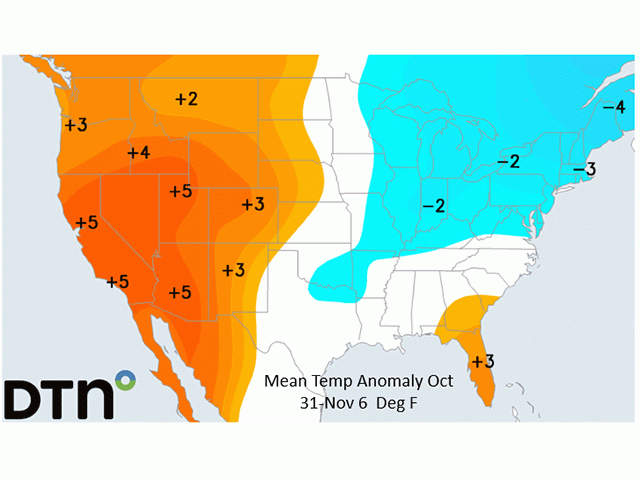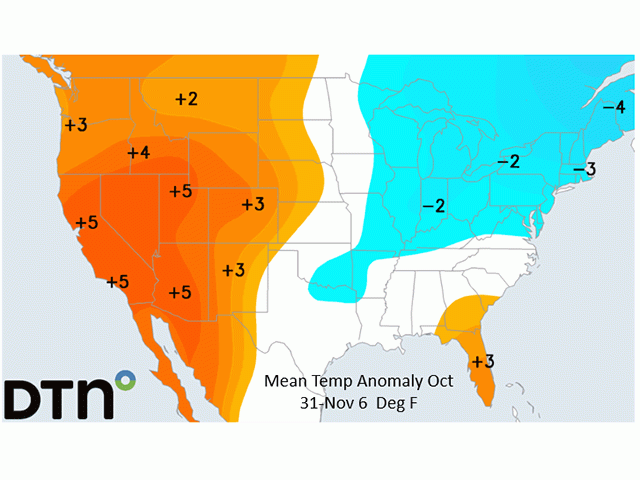Ag Weather Forum
Intense but Brief Polar Vortex Visit
Record-setting cold is indicated for some large portions of the northern and central United States during this next-to-last weekend of October. The morning of Oct. 23 saw air temperatures below zero Fahrenheit in northeastern Montana. Single-digit overnight lows are forecast in western Kansas early in the final week of October. We've seen snow of close to a foot in parts of the western Midwest.
It's easy to ask whether this is the start of cold from here on. After all, a year ago at about this point in the fall, the snow flew in the northern Plains and set in motion a six-month stretch of snowy fields and extensive harvest delays. However, this year's event looks more of a solitary feature for now and not the onset of a series of more cold waves in succession.
DTN Long-Range Forecast Lead Meteorologist Nathan Hammond is optimistic that a periodic ocean and atmospheric feature in the Pacific known as the Madden-Julian Oscillation (MJO) will work out of the Eastern Hemisphere, cross the Pacific and help modify temperatures in North America. This feature also brought some easing of the 2019 cold outbreak. "This pattern will end somewhat like it did last year with a relatively similar MJO progression out of the Maritime Continent (Australia, Southeast Asia) and into the western Pacific," Hammond said.
P[L1] D[0x0] M[300x250] OOP[F] ADUNIT[] T[]
It is going to take a week or so for this moderation to actually settle in. DTN forecast temperatures for the week ending Oct. 30 call for average temperature values of 15 to almost 20 degrees Fahrenheit below normal from the Rockies east to the Mississippi River and south as far as the Texas Panhandle.
With the MJO's influence, DTN Ag Meteorologist John Baranick said the atmospheric pattern will feature a pronounced change in prevailing wind direction, replacing north-south with west-east. Snow cover will mean some big differences in progress, however. "The duration of the most intense cold will only last a few days and then be on its way back into Canada as the pattern turns flatter," Baranick said. "Areas that have received heavy snow (Northern Plains through Wisconsin) may not see it melt as easily though, and tend to push daytime high temperatures down several degrees from where we would expect had there been no snow cover under this same pattern."
The upcoming cold wave does have the potential to cause some winterkill in the new Southern Plains winter wheat crop as DTN Staff Reporter Emily Unglesbee reports: https://www.dtnpf.com/….
The bitter cold is also likely to stress livestock in the Northern Plains with record-breaking low temperatures. Here is the link to that article by DTN's Russ Quinn:
One feature to note with the sharp and fairly quick-changing pattern ahead is that we are still in fall with a full month to go in the meteorological calendar before winter. It is still too early to put a definite identity on how the winter pattern will develop.
Bryce Anderson can be reached at bryce.anderson@dtn.com
Follow him on Twitter @BAndersonDTN
(c) Copyright 2020 DTN, LLC. All rights reserved.






Comments
To comment, please Log In or Join our Community .